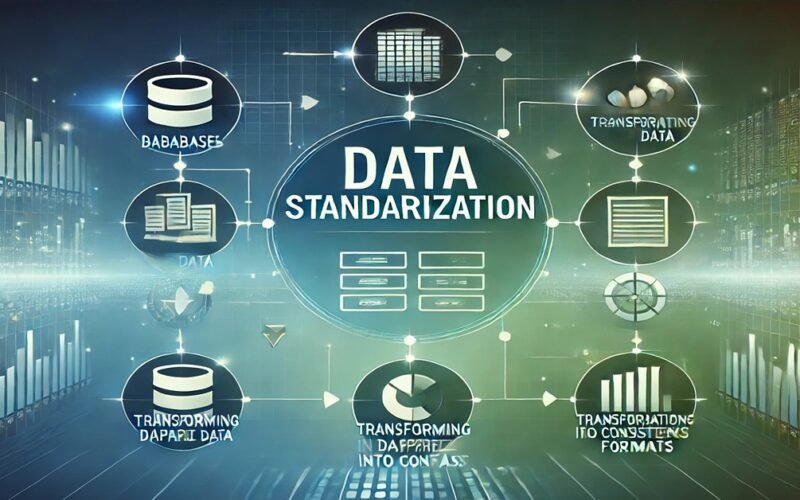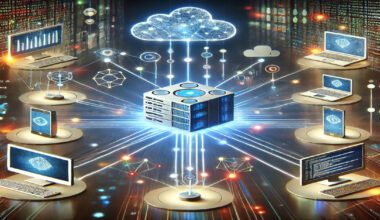Summary: This comprehensive guide explores data standardization, covering its key concepts, benefits, challenges, best practices, real-world applications, and future trends. By understanding the importance of consistent data formats, organizations can improve data quality, enable collaborative research, and make more informed decisions.
Introduction
In today’s data-driven world, organisations across various sectors generate and collect vast amounts of data. However, this data often comes from disparate sources and in different formats, making it challenging to analyse and derive meaningful insights.
Data standardization is a crucial process that addresses these challenges by transforming data into a consistent format. This blog will explore the key concepts, benefits, challenges, best practices, real-world applications, and future trends in data standardization.
Key Concepts of Data Standardization
Data standardization is the process of converting data from multiple sources into a consistent format that meets predefined standards. This involves ensuring that all entries in different datasets related to the same terms have the same format, which allows for meaningful comparison and analysis.
Consistency
Ensures that data entries across different datasets follow the same format, making it easier to compare and analyse information accurately.
Accuracy
By eliminating inconsistencies and errors, data standardization enhances the reliability of data, which is crucial for making informed decisions and conducting precise analyses.
Interoperability
Standardized data can be easily shared and understood across different systems and teams, promoting collaboration and the effective use of sophisticated tools and methodologies.
Efficiency
Reduces the time and effort required to clean and prepare data for analysis, allowing organisations to focus on deriving insights and making data-driven decisions.
Compliance
Helps organisations adhere to regulatory requirements and industry standards by ensuring that data is managed and processed consistently and transparently.
Read More
Unlocking the 12 Ways to Improve Data Quality
The Process of Data Standardization
As organisations increasingly rely on data for decision-making, the need for standardized data has become paramount. This section highlights the process of data standardization, outlining its key aspects, steps involved, and the significance of maintaining standardized data in various applications.
Understand the Data Sources
The first step in data standardization is to identify and understand the various data sources that will be standardized. This includes databases, spreadsheets, APIs, and manual records.
Identify Data Sources: Determine all the different sources of data that will be included in the standardization process. This could include internal databases, external APIs, and third-party data providers.
Assess Data Quality: Evaluate the quality of data from each source. Look for issues such as missing values, inconsistent formats, or outliers. Understanding the quality of the data is essential for determining the necessary cleaning and transformation steps.
Define Standardization Rules
Once the data sources are understood, the next step is to define the standardization rules that will guide the process.
Develop a Data Dictionary: Create a data dictionary that defines standard formats, naming conventions, and acceptable values for key data elements. This dictionary serves as a reference for all stakeholders involved in the standardization process.
Set Data Type Standards: Standardize data types across sources (e.g., date formats, numeric formats, text encodings). This ensures consistency in how data is represented and helps prevent errors during data processing.
Data Cleaning
Data cleaning is a critical step in the standardization process that involves identifying and correcting errors and inconsistencies in the data.
Remove Duplicates: Identify and eliminate duplicate records to ensure data uniqueness. Duplicate entries can lead to skewed analysis and incorrect conclusions.
Handle Missing Data: Decide on a strategy for handling missing data—whether to impute, delete, or flag these entries. Properly addressing missing data is essential for maintaining data integrity.
Data Transformation
Data transformation involves converting data into standardized formats according to the defined rules.
Normalize Data Formats: Convert data into standardized formats. For example, change date formats to a single standard (e.g., YYYY-MM-DD) or unify text case (e.g., all lowercase).
Scale and Normalize Numeric Data: For numerical data, apply scaling or normalization to bring different ranges into a comparable scale, especially important for machine learning models. This step ensures that numerical values are on a similar scale, improving model performance.
Integration and Consolidation
After data transformation, the next step is to integrate and consolidate the standardized data into a single dataset.
Merge Data from Multiple Sources: Combine data from different sources into a single, integrated dataset. This might involve joining tables, concatenating datasets, or using other methods to unify the data.
Resolve Conflicts: In cases where conflicting data exists from different sources, establish rules to resolve these conflicts. For example, determine which source takes precedence or how to average values when discrepancies arise.
Quality Assurance
Quality assurance is a vital step to ensure that the data standardization process has been successfully implemented.
Validate Standardized Data: Perform checks to ensure that the data standardization has been correctly implemented. This may involve running validation scripts or manually checking samples of the data.
Audit Trails: Keep records of data transformations and standardization processes for traceability and future audits. Maintaining an audit trail is essential for accountability and compliance with data governance standards.
Continuous Monitoring and Maintenance
Data standardization is not a one-time process; it requires ongoing monitoring and maintenance to ensure that data remains consistent over time.
Regular Reviews: Conduct regular reviews of standardized data to identify any emerging issues or inconsistencies. This helps maintain data quality and ensures compliance with the established standards.
Update Standards: As business needs and data sources evolve, it may be necessary to update the data standardization rules and standards. Regularly revisiting and revising standards ensures that they remain relevant and effective.
Benefits of Data Standardization
Data standardization offers numerous benefits, including improved data quality, enhanced analytical capabilities, streamlined operations, and better compliance. By ensuring consistent data formats, organisations can make informed decisions and foster collaboration across teams.
Improved Data Quality
Standardizing data eliminates inconsistencies and errors, ensuring that the data is accurate and reliable. This is essential for making informed decisions and conducting precise analyses.
Facilitated Collaborative Research
When data is standardized, it can be easily shared and understood by different teams and researchers, promoting collaboration and the sharing of sophisticated tools and methodologies.
Enables Large-Scale Analytics
Consistent data formats allow for the integration and analysis of large datasets, enabling organizations to uncover insights and trends that would be difficult to detect with unstandardized data.
Reduced Unnecessary Data Variations
By defining character limits, data types, and patterns, data standardization minimises variations that can lead to miscommunication and errors.
Improved Automatic Linkage
Standardized data allows for more efficient and accurate linking of related data points, enhancing the ability to track and analyse data across different sources and systems.
Challenges in Data Standardization
Data standardization presents several challenges that organisations must navigate to ensure effective implementation. These challenges include the complexity of diverse data sources, resistance to change among employees, and others. These are highlighted below:
Complexity of Data Sources
Organisations often collect data from various sources, including databases, spreadsheets, and external APIs, each with its own format and structure. Standardizing such diverse data can be complex and time-consuming.
Resistance to Change
Employees may be resistant to adopting new data standards and processes, especially if they are accustomed to existing practices. This resistance can hinder the implementation of data standardization initiatives.
Resource Constraints
Standardizing data requires time, effort, and resources. Organisations may struggle to allocate sufficient resources to undertake comprehensive data standardization efforts.
Maintaining Standards
Once data standards are established, organisations must continuously monitor and maintain them to ensure ongoing compliance. This requires ongoing training and awareness among staff.
Data Privacy and Security
Standardizing data often involves sharing it across different systems and teams, raising concerns about data privacy and security. Organisations must ensure that data is handled responsibly and in compliance with relevant regulations.
Best Practices for Data Standardization
Data standardization is a critical process that helps organizations transform disparate data into a consistent format. This transformation facilitates meaningful analysis and informed decision-making. Although challenges may arise, the advantages of standardizing data far exceed the difficulties. By aligning data formats and structures, businesses can enhance accuracy and efficiency in their operations.
Define Clear Standards
Establish clear and comprehensive data standards that outline the required formats, naming conventions, and data types for each data element.
Engage Stakeholders
Involve key stakeholders from different departments in the standardization process to ensure that the standards meet the needs of all users.
Invest in Training
Provide training and resources to employees to help them understand the importance of data standardization and how to adhere to the established standards.
Utilise Automation Tools
Leverage data standardization tools and software to automate the cleaning, transformation, and validation processes, reducing the manual effort required.
Monitor Compliance
Regularly review and monitor data to ensure compliance with the established standards. Implement feedback mechanisms to address any issues that arise.
Real-World Applications of Data Standardization
Real-world applications of data standardization are vital across various industries, enhancing data quality and consistency. By implementing standardized data practices, organisations can improve decision-making, streamline operations, and facilitate better collaboration, ultimately driving efficiency and effectiveness in their processes.
Healthcare
In healthcare, standardizing patient data is crucial for ensuring accurate diagnoses, treatment plans, and interoperability between different healthcare systems. Standardized data enables better patient care and facilitates research.
Finance
Financial institutions use data standardization to ensure consistency in reporting, compliance with regulations, and accurate risk assessment. Standardized financial data allows for better decision-making and improved operational efficiency.
Retail
Retailers standardize product data to ensure consistency across different sales channels, such as online and brick-and-mortar stores. This enables better inventory management, pricing strategies, and customer experiences.
Marketing
In marketing, standardizing customer data helps organizations create targeted campaigns and improve customer segmentation. Consistent data allows for more effective analysis of customer behaviour and preferences.
Manufacturing
Manufacturers standardize data related to production processes, supply chains, and quality control to improve operational efficiency and reduce errors. Standardized data enables better tracking and analysis of production metrics.
Future Trends in Data Standardization
As data continues to grow in volume and complexity, several trends are likely to shape the future of data standardization:
Increased Automation
The use of automation tools for data standardization will become more prevalent, allowing organisations to streamline processes and reduce manual effort.
AI and Machine Learning
Artificial Intelligence and Machine Learning algorithms will play a significant role in data standardization by automating data cleaning, transformation, and validation processes. These technologies can help identify patterns and anomalies in data more efficiently.
Data Governance Frameworks
Organisations will increasingly adopt comprehensive data governance frameworks that include data standardization as a core component. These frameworks will help ensure compliance with regulations and promote best practices in data management.
Interoperability Standards
As organisations continue to integrate diverse data sources, there will be a growing emphasis on establishing interoperability standards that facilitate seamless data exchange between systems.
Focus on Data Privacy
With increasing concerns about data privacy and security, organisations will need to ensure that their data standardization efforts adhere to relevant regulations and best practices for data protection.
Conclusion
Data standardization is a critical process that enables organisations to transform disparate data into a consistent format, facilitating meaningful analysis and decision-making. While challenges exist, the benefits of data standardization far outweigh the difficulties.
By following best practices and staying abreast of future trends, organizations can harness the power of standardized data to drive innovation and improve operational efficiency.
Frequently Asked Questions
What Is The Primary Goal Of Data Standarsization?
The primary goal of data standardization is to convert data from multiple sources into a consistent format that allows for accurate comparison, analysis, and integration across different systems.
How Does Data Standardization Improve Data Quality?
Data standardization improves data quality by eliminating inconsistencies and errors, ensuring that data is accurate, reliable, and suitable for informed decision-making.
What are Some Common Challenges Faced During Data Standardization?
Common challenges include the complexity of diverse data sources, resistance to change among employees, resource constraints, maintaining standards over time, and ensuring data privacy and security.




